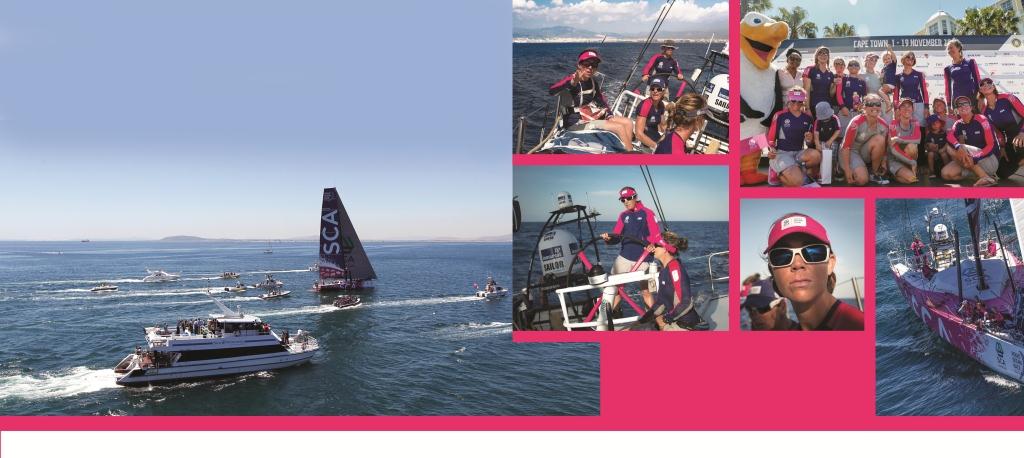When Jeanne Baret became the first woman to circumnavigate the globe in 1785, she had to disguise herself as a man to make the journey. More than two centuries later, women are making similar attempts to circumnavigate the planet, but by proudly flaunting their femininity.
Swedish company SCA, the world’s third largest producer of paper products and toiletries, has assembled a 13-woman crew, named Team SCA, to be the fourth all-female contingent competing in the 41-year-old Volvo Ocean Race. And they will be wearing pink on the seas.
The Volvo Ocean Race is a sailing event held every three years in which yachts travel around the world over nine months, stopping at nine ports, in pursuit of a trophy. There is no monetary prize for the winners.
SCA’s all-female crew this year, stationed in the Canary Islands for an intense program, has been through a rigorous 18-month preparation, including seven-day-a-week gym sessions lasting between 45 and 70 minutes. Ten months in, the women had already lifted a million kilograms each to ready themselves for the weight they would have to pull during the race. We caught up with them in Cape Town at the end of the first leg of the nine-month race.
“We hope to surprise people and make them sit up and take notice of us as a professional sports team. We would like to come out of this race as the best performing female team in the race,” says Sam Davies, Team SCA’s skipper.
For that to happen, Team SCA will have to finish the nine-leg, nine-month race in the top four. It is a tough task but the team spent months preparing for it thanks to the biggest funding budget a women’s outfit has received to date.
Onboard gear of 3,000 kilograms has to be moved every time the yacht changes direction over the course of 60,800 kilometers, which is why the women’s team are allowed three more crew members than the men’s teams.
“Females are never going to be as physically strong as men, but that is where we have to be a bit clever, which is why the training is important,” says Davies.
Preparation was not all plain-sailing. In April 2013, coach Magnus Olssen died after suffering a stroke and the crew had to commit to continuing without him. Olssen had competed in six Volvo Ocean Races and his experience was considered invaluable to a fairly new group.
Although Team SCA includes American Olympic medalist Sally Barlow, British Olympic meteorologist Libby Greenhalgh and the only woman to circumnavigate the globe both ways on her own, Des Caffari, only two of their group had participated in a Volvo Ocean Race before. Compare that to the 81 races the men in the other teams have done and the gulf between the girls and the rest becomes obvious. But the women do not see it that way.
“There really are not as many differences as you think. It depends on how professional the team is, how well they work together and their skills,” says Davies. Team SCA has plenty of the latter. Their late-surge at the end of the first leg saw them overtake Spanish yacht, MAPFRE in the final hour to finish in sixth position after struggling in last place for most of the way from Alicante in Spain.
They arrived in Cape Town, determined to “keep improving, get more experienced and stronger”, and to continue to be unashamedly feminine as the trip continues.
